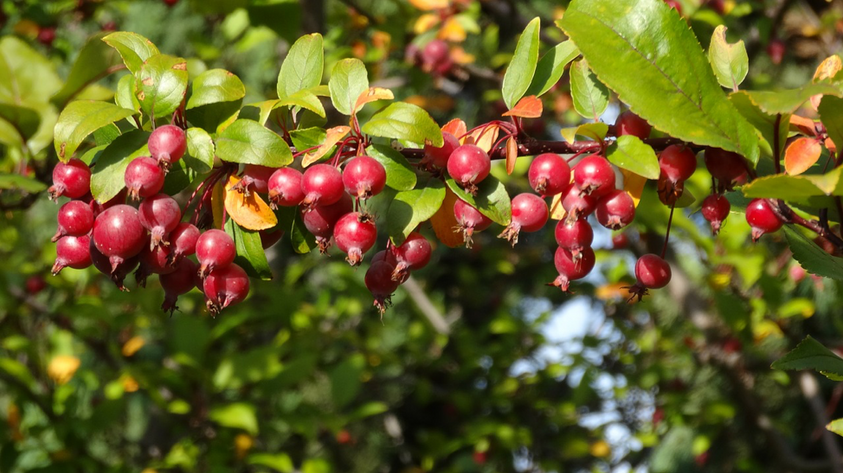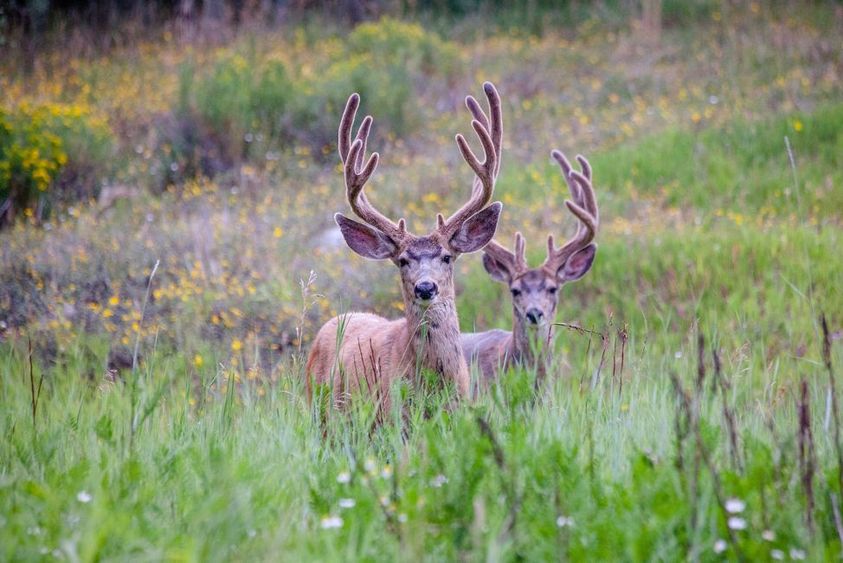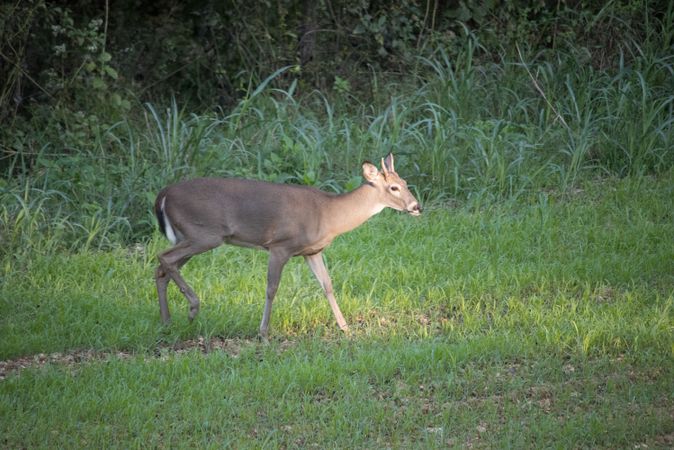Deer congregate around fruit- and nut-bearing trees. In fact, white oak and sawtooth acorns, persimmons, and crabapples are what deer will eat first, even before a lush food plot. So, once you determine which tree species will flourish in your region, you won’t need much more than a spade or heavy shovel and a strong back and arms to get started.
We’d suggest planting them along the outer edges of your food plots to draw big bucks out sooner. There are very few, if any, downsides to planting trees, and we believe very strongly in giving back to Mother Nature in this way. We’ve focused on three types of trees that are sure to entice more deer onto your hunting land.
Sawtooth Oak
A wise man once said that a whitetail deer would get down on its knees and walk that way from Tennessee to Timbuktu for one acorn from a sawtooth oak. This is a smidge far-fetched, but the idea is, deer love sawtooth acorns. In fact, they will frequent oak groves with a fixed regularity in the fall, likely not moving on to any other food source until the supply runs out. Plus, as an investment, this tree is fast-growing, producing acorns after just five years.
In early spring while it’s still dormant, plant a bare-root sawtooth oak seedling in well-tilled soil with little to no other competition. If planting several in a given area, be sure to space them out at least 15 feet from one another in order to maximize acorn production. Dig the hole to be the same depth as it was at the nursery and at least one foot wider than the soil ball root. Then, add a slow-release fertilizer in the planting hole. This will help to the plant grow in the early, more critical phase.
At maturity, a sawtooth oak can reach up to 70 feet and attracts many other kinds of wildlife outside of just deer. As long as your land doesn’t flood often or have any draining issues, this oak tends to thrive in a variety of climates, even in a hardy winter climate (not below 0 degrees Fahrenheit). Just be sure to keep other vegetation at bay while the tree is still in its infancy (two years or less), as competition will stunt the tree’s growth.
“Deer Candy”
Another magnetic fruit-producing tree for deer is the persimmon tree. Their fruit fall in the autumn, creating a forest floor of candy for deer to flock to. American persimmon trees are native from Florida to Connecticut, west to Iowa and south to Texas. Planting these will certainly attract other wildlife to your hunting land, and they’re very low maintenance and winter resistant. However, planting a persimmon tree will be a long-term investment into your property. It can take up to ten years for one to mature and produce fruit. Plus, these are dioecious, meaning it can either be male or female, and females are the only ones that actually produce fruit. Unfortunately, it is not possible to tell the sex of the tree until it’s reached maturity. By planting several in a select area, you will increase the likelihood of one of them producing fruit.
Similar to the sawtooth oak, plant a deep hole in a well-draining area that gets a decent amount of sun. At the bottom of the hole, add a mixture of loamy soil and plain dirt. There’s no need to preemptively fertilize unless growth becomes stagnant.

Planting trees on your property has a wealth of benefits, including producing delicious fruit for animals and people to enjoy.
Crabapple Trees
Unlike the persimmon tree, a crabapple tree will only take between three and five years to produce fruit. If you plant crops and flowers on your property, crabapple trees are attractive to bees when they bloom, making for solid cross-pollination.
Although there are many varieties, almost all of them are generally resilient in the winter and do best in soil that drains well. They like sunlight and need consistent water, but other than that, require very little upkeep or pruning. You will want to research which species are best for your area, considering climate, resilience to disease (apple scab or fireblight), and the size and taste of the fruit produced.
Here are a few pointers for anyone new to planting crabapples. In the Southeast, a species with a resistance to fireblight will be important. Select a variety which produces a sweeter fruit the size of a quarter or larger, rather than small berries that may never fall off the tree. In the Northeast, be sure that the species will survive low temperatures as well as apple scab.
Think what you could do, as a conservationist and a landowner, if you plant just a few trees a year - and who and what will benefit. That’s not asking much, but it sure is giving a lot. That reminds us of another good saying: The best time to plant a tree is 20 years ago. The second best time is now.







